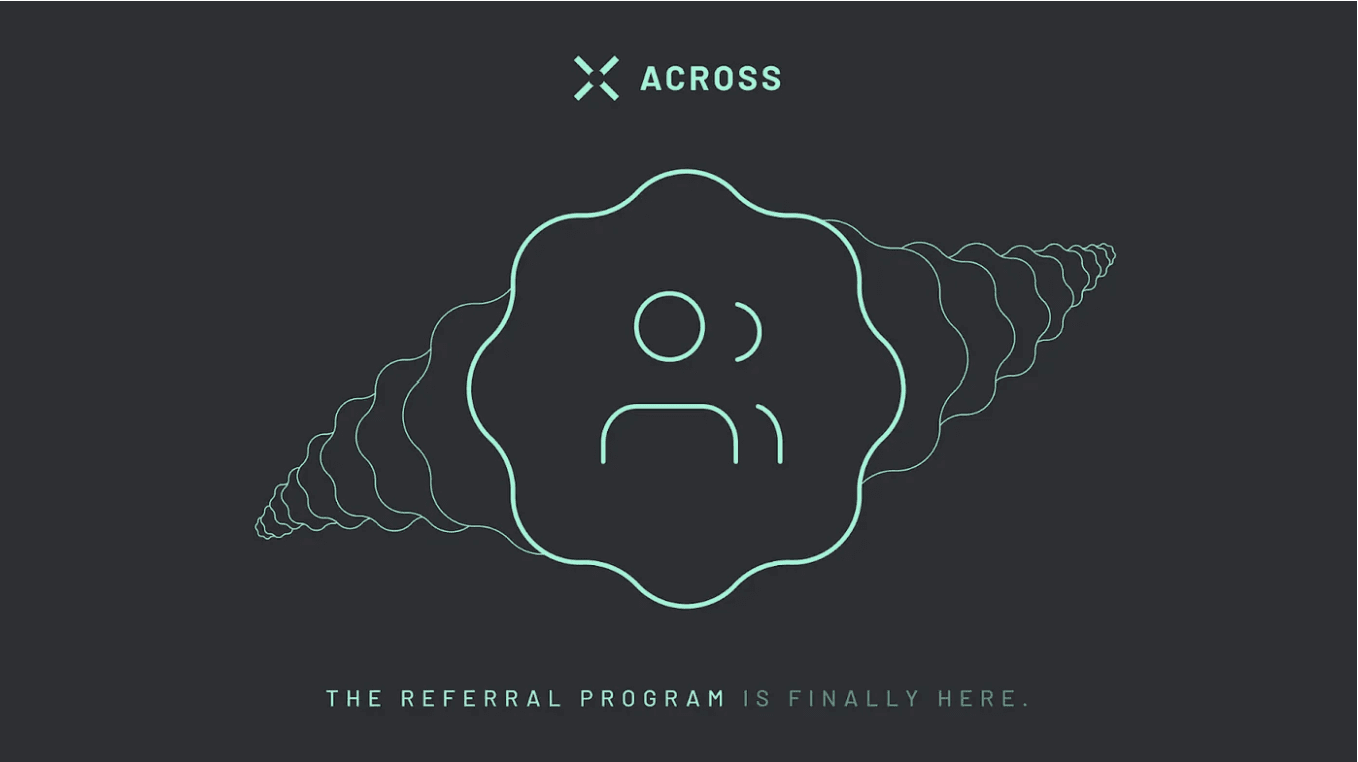Nov 3, 2022
Introduction
Most liquidity mining programs today do not encourage and reward long-term supporters of a project. With most protocols, a loyal liquidity provider, who has remained in a pool for a significant period of time and has not sold their token rewards, earns the same APY as a mercenary liquidity provider. These mercenary liquidity providers choose to come and go, constantly dumping what they have farmed. This is suboptimal and is exactly what reward locking aims to change.
Reward locking is an enhanced version of traditional liquidity mining that discourages farm-and-dump activity while rewarding committed contributors to the protocol. Liquidity providers (LPs) have an individualized rate at which they earn rewards that reflect their loyalty. The idea is very simple: the longer an LP keeps accumulated rewards unclaimed (and unsold), the faster the LP earns additional rewards.
Risk Labs (the foundation that supports UMA and Across Protocol) has already deployed a contract called the Accelerating Distributor (audit) to allow any project to implement the concept of reward locking. The Accelerating Distributor is a modified staking contractor that tracks when an LP starts staking its LP tokens and when the LP claims rewards. The project using the contract to incentivize LPs would preload the contract with its project token and set various parameters that can control how an LP’s earning multiplier increases as time passes. To start earning rewards, LPs would simply pool assets into a protocol (like Across) and then stake those LP tokens into the accelerating distributor contract. The example below illustrates how this works.
Reward Locking for Across
Across will be the first protocol to implement reward locking. It will be used to incentivize LPs to pool ETH, USDC, DAI, WBTC and ACX to facilitate bridge transfers. Each incentivized liquidity pool will have a base rate of emission and each LP will have a unique multiplier for each of these pools. The LP will earn a pro-rata share of the base rate emission multiplied by the LP’s unique multiplier. For Across’ reward locking programming, an LP’s multiplier starts at 1 on day zero and can grow linearly to a maximum of 3 when rewards are left unclaimed for 100 days. The table below illustrates this simple progression. As an example, an LP that has held rewards unclaimed for 60 days will have a 2.2 multiplier. Once an LP claims ANY rewards, the multiplier immediately resets to 1 and the LP would need to earn that multiplier again.


Across will commit 75,000,000 $ACX for the initial reward locking program. It is expected to operate for at least 6 months and will be reviewed at that point for any changes.
The Across Referral Program, which is currently live, uses a similar approach to reward locking, but with tiers instead of multipliers. Referrers can increase the rate by which they earn referral fees by keeping their rewards unclaimed. A percentage of the fee a bridge user pays to the liquidity pool is awarded to the referrer and that percentage increases as the number of referrals or volume accumulated goes up. Referrers can progress from copper to bronze, silver, gold, and platinum tiers as their referral fee rate increases from 40% to 80%. However, once a referrer claims rewards, the referrer’s tier immediately resets back to copper, all referral links previously established are broken, and the higher referral fee rate is lost.

Benefits of Reward Locking
The benefits of reward locking are clear. Keeping rewards locked discourages farm and dump activity, but more importantly makes the LP and referrer more engaged with the protocol. If you are encouraged to have a stake in the protocol you will naturally want to know more about it and are incentivized to join the community and further its mission.
Reward Locking = Gamification of DeFi
In addition to the economic benefits, the multiplier and the status symbol of it offers the user intangible value. Given the various unique multipliers you can earn for each liquidity pool and the different tiers you can acquire as a referrer, each wallet that contributes to the protocol will develop a personalized identity. Similar to a character in a role-playing game, the various stats can be translated into experience points that could allow the wallet to level up and obtain status in the protocol.
Reward locking can be gamified further with a well thought out user interface and user experience to make it appear like an actual game. It can be built similarly to role-playing gaming (RPG) where users can earn special NFTs or items for reaching certain milestones. Community members could build this and/or an actual game that uses these stats and battles with one another. A leaderboard could also recognize the accomplishments of all loyal users. This would all work to make the user very reluctant to claim their rewards and fall in status. This is also something that the Across community can consider building in the future.
Reward Locking vs. Vote Locking
Reward locking can be compared to vote-escrowed locking implemented in the tokenomics of veCurve and veBAL. Vote locking requires token holders of a protocol to “lock” their tokens in order to earn voting rights for governance and to boost rewards from protocol emissions. For example, Curve requires $CRV holders to lock their tokens for up to 4 years (!) to earn a 2.5x boost in rewards while Balancer requires token holders to lock BAL/WETH 80/20 BPT to also earn a 2.5x boost in rewards. Locking tokens in this way does act to reward long-term believers in the protocol and decreases the floating supply of the token, which possibly reduces selling pressure. However, it is a significant commitment as the process is irreversible, and once locked the ownership of these tokens cannot be transferred. A 1 to 4 year lock-up may be a barrier to entry for many individuals given a typical person may need access to liquidity during such a long time period. As a result, it can create potentially harmful outcomes for the future as the locked tokens become concentrated by small groups of individuals or protocols focused on optimizing this process (such as Convex and Aura). This small group dominates governance rights and also extracts value from the protocol through bribes.
Reward Locking aims to provide the benefits of vote-escrowed locking tokenomics, but instead of forcing long upfront token locks, it rewards LPs or token holders with benefits and status for continued loyalty in not claiming (and selling) rewards. Individual LPs or token holders can more easily participate in reward locking and earn their reward multiplier while still having full access to their tokens when needed. A protocol does not need to overhaul or build new tokenomics to implement reward locking nor does it need to engage in another project’s ecosystem and pay bribes to be included in a liquidity mining program. The protocol can simply incentivize specific liquidity pools, or its own token, just by using the reward lock (Accelerating Distributor) staking contract. All of this also avoids the concentration of tokens with a small group of individuals who use scale to buy their way in and dominate governance and extract value through bribes. Another way to look at the comparison is vote locking allows users to buy governance and protocol benefits whereas reward locking requires users to earn these rights over time.
The reward locking concept can be taken even further to mimic the features of vote locking. Token holders can gain more governance power or earn a bigger share of protocol revenue the longer they have their tokens staked in a reward locking contract (with rewards unclaimed). Additional benefits and perks can be considered to add further value to the protocol token and encourage loyalty to be earned over time by locking rewards. The concept of reward locking should be considered an alternative to vote-escrowed locking when thinking about tokenomics.
Reward Locking for the $ACX Airdrop
$ACX airdrop recipients will have an opportunity to experience the benefits of reward locking when they claim. $ACX will be rewarded as an $ACX Across LP token and automatically staked into a reward locking contract that will be paying a generous return. The pooled and staked $ACX will allow $ACX to be efficiently bridged to all Across destinations. Airdrop recipients who are staked will immediately start earning more $ACX and can watch their multipliers and returns increase.
Conclusion
Reward locking is a new incentive mechanism that represents a better way to foster liquidity mining, and one that can be replicated almost universally throughout other DeFi protocols. The mechanism is being pioneered with the upcoming launch of the Across token. Reward locking benefits loyal liquidity providers over mercenary farmers by paying a higher return to LPs who keep their accumulated rewards unclaimed and unsold. The combination of reward locking and the capital efficient one pool design of Across will make providing liquidity to the protocol attractive to all DeFi users. We believe reward locking will help to retain dedicated liquidity providers in Across and also convert them to loyal community members (if they are not one already).
If you have any feedback or questions about reward locking, please engage us by tweeting to @AcrossProtocol or replying in the comments. We also welcome any projects interested in implementing reward locking to reach out to us as well.
- Written by Kevin Chan

Across Protocol is an intents-based interoperability protocol, capable of filling and settling cross-chain intents. It is made up of the Across Bridge, a powerfully efficient cross-chain transfer tool for end users, Across+, a chain abstraction tool that utilizes cross-chain bridge hooks to fulfill user intents and Across Settlement, a settlement layer for all cross-chain intent order flow. As the multichain economy continues to evolve, intents-based settlement is the key to solving interoperability and Across is at the core of its execution.





